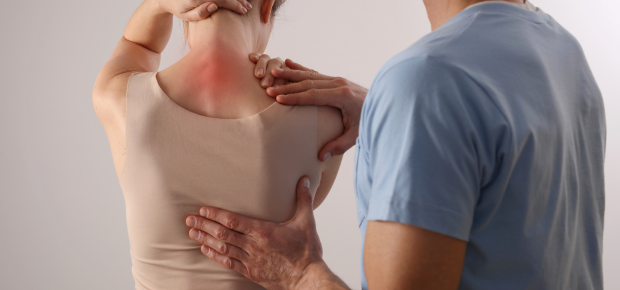
Living with pain—whether it’s chronic, recurring, or temporary—can be exhausting. While conventional painkillers may offer short-term relief, many Australians are now turning to natural therapies that aim to address the root causes of pain and promote the body’s own healing response. From traditional practices like acupuncture to mind-body techniques such as guided imagery, there’s no one-size-fits-all approach—but there are plenty of options worth exploring.
Below are 11 natural therapies that may help reduce pain and improve your overall well-being.
1. Acupuncture
Acupuncture is a key part of Traditional Chinese Medicine that involves inserting fine needles into specific points on the body. These points are said to align with energy channels or "meridians," and stimulating them is believed to restore energy flow and reduce discomfort.
Benefits:
-
May help relieve pain from arthritis, migraines, back issues, and more
-
Often used alongside physiotherapy or massage
-
Can improve energy levels and sleep
It’s commonly included in holistic pain treatment plans and can be explored alongside other gentle, non-invasive therapies.
2. Hydrotherapy
Hydrotherapy uses water in various forms — such as hot or cold baths, showers, saunas, or compresses — to ease muscle tension, boost circulation, and reduce inflammation.
Common techniques include:
-
Warm baths to ease joint stiffness
-
Cold compresses for inflammation
-
Alternating hot and cold water for circulation
Hydrotherapy is especially helpful for people with joint pain, muscle soreness, or stress-related tension.
3. Massage therapy
Massage is one of the most popular natural methods for easing muscular pain and tension. A trained therapist uses kneading, pressure, or stretching techniques on soft tissues to reduce pain and support healing.
Types of massage that may help:
-
Remedial massage for injury recovery
-
Swedish massage for stress relief
-
Deep tissue massage for chronic tension
Massage not only relieves pain but also promotes relaxation and mental clarity.
4. Prolotherapy
Prolotherapy is an injection-based treatment that uses a natural irritant (usually dextrose solution) to trigger inflammation in injured soft tissues. This response encourages tissue repair and collagen production, helping to strengthen weak joints and ligaments.
Used for:
-
Chronic back pain
-
Joint instability
-
Tendon injuries
Always consult a qualified practitioner to ensure prolotherapy is appropriate for your condition.
5. Tai chi
Tai chi is a gentle form of exercise that involves slow, flowing movements paired with deep breathing and mental focus. It is particularly helpful for managing pain and stiffness caused by arthritis or fibromyalgia.
Benefits:
-
Improves flexibility and balance
-
Encourages calmness and breath awareness
-
Low-impact and suitable for all ages
Practising tai chi regularly may also help prevent falls and improve mobility.
6. Yoga
Yoga combines movement, breathwork, and meditation to support physical and mental balance. Different styles offer different benefits, and many focus on improving posture, core strength, and joint mobility — all of which can reduce pain.
Helpful styles for pain:
-
Iyengar yoga (focus on alignment and props)
-
Anusara yoga (heart-opening and alignment-based)
-
Restorative yoga (gentle poses and relaxation)
Yoga may also reduce stress, a major contributor to pain flare-ups.
7. Stress management
Chronic stress can amplify pain by causing muscles to tense and the nervous system to become hypersensitive. Managing stress is key to managing physical pain.
Effective stress-reducing techniques:
-
Deep breathing exercises
-
Guided meditation or mindfulness
-
Gentle movement like tai chi or yoga
-
Enjoyable hobbies and social connection
Reducing mental stress can directly support pain relief in the body.
8. Herbal medicine
Herbs have been used for centuries to reduce inflammation, calm the nervous system, and ease pain naturally. A qualified herbalist or naturopath can tailor a treatment plan specific to your needs.
Common herbs with pain-relieving properties:
-
Peppermint: muscle and tension relief
-
Feverfew: often used for migraines
-
Turmeric: anti-inflammatory and antioxidant
-
Valerian root: calming and good for nerve pain
Avoid self-prescribing, especially if you're on medication, pregnant, or managing a chronic illness.
9. Guided imagery
Also known as visualisation, guided imagery uses mental pictures and calming scenarios to relax the mind and reduce the perception of pain. It can be done with an audio recording, a practitioner, or on your own.
Benefits include:
-
Reduction in pain-related anxiety
-
Improved sleep and mood
-
Greater focus on healing
This therapy taps into the mind–body connection to help manage pain from within.
10. Biofeedback
Biofeedback teaches you how to consciously control physiological functions such as heart rate, muscle tension, and breathing patterns — all of which can affect how your body experiences pain.
Common biofeedback tools monitor:
-
Skin temperature
-
Muscle activity
-
Brain waves or heart rate variability
With practice, you can learn to reduce pain responses and restore balance without medication.
11. Biomesotherapy
Biomesotherapy combines principles from homoeopathy and physical therapy. It involves injecting a sterile saline solution under the skin while also using oral homoeopathic remedies to target a specific condition.
Key features:
-
Stimulates the body’s healing response
-
Often used for joint, muscle, or nerve pain
-
Focuses on organ support as well as symptom relief
Always ensure your practitioner is properly trained and licensed in biomesotherapy techniques.
Final thoughts
Natural therapies offer a range of options for managing pain without relying solely on medication. Whether you prefer movement-based practices like yoga and tai chi, hands-on treatments like massage and acupuncture, or gentle mind-body techniques such as guided imagery and biofeedback, there’s a therapy that may suit your needs and comfort level.
The key is to explore what works best for your body and lifestyle. Always consult a qualified practitioner to ensure any therapy is safe and appropriate for your condition. With the right support and a personalised approach, natural pain management can improve not only your physical comfort but also your overall quality of life.









